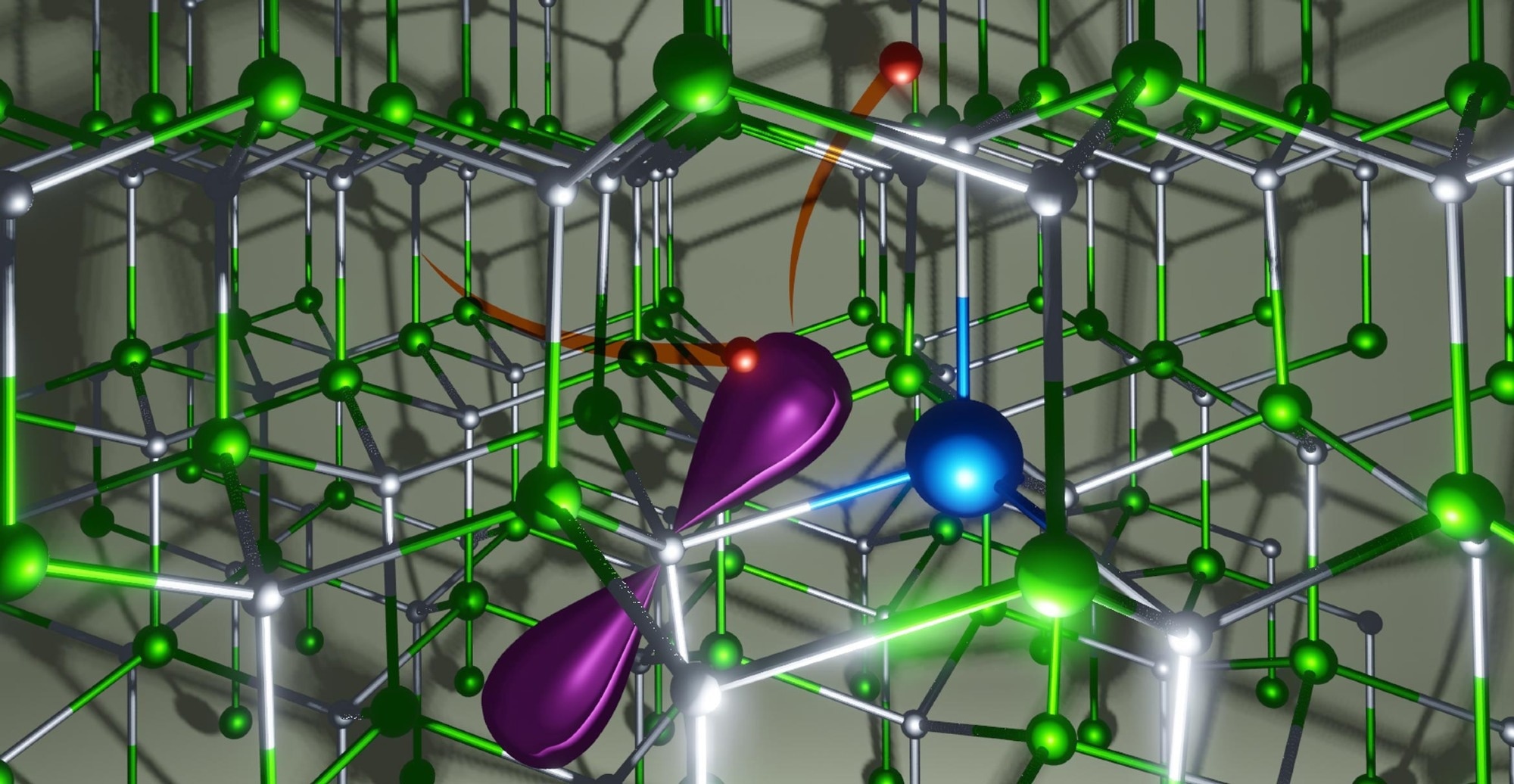The performance of devices like light-emitting diodes (LEDs) has been frequently limited by defects. The mechanisms by which defects eliminate charge carriers are clearly understood in materials that release light at red or green wavelengths.

The trap-assisted Auger-Meitner effect allows for energy to be transferred to another electron. Image Credit: Fangzhou Zhao
However, an explanation has been lacking for such loss in shorter-wavelength (blue or ultraviolet) emitters.
However, scientists in the Department of Materials at the University of California Santa Barbara recently discovered the crucial role of the Auger-Meitner effect. It is a mechanism that enables an electron to lose energy by kicking one more electron up to a higher-energy state.
It is well known that defects or impurities—collectively referred to as ‘traps’—reduce the efficiency of LEDs and other electronic devices.
Chris Van de Walle, Materials Professor, University of California, Santa Barbara
The new methodology disclosed that the trap-assisted Auger-Meitner effect could generate greater loss rates than those caused by other earlier considered mechanisms. This helps resolve the mystery of how defects affect the efficiency of UV or blue light emitters.
The study outcomes have been reported in the journal Physical Review Letters.
This phenomenon’s observations date back to the 1950s, when scientists at Bell Laboratories and General Electric noted its harmful impact on transistors.
Van de Walle described that electrons could get trapped at defects and turn out to be incapable of executing their intended role in the device, be it amplifying a charge in a transistor or emitting light by recombining it with a hole (an unoccupied lower-energy state) present in an LED.
In this recombination process, the energy lost was assumed to be liberated in the form of phonons, that is, lattice vibrations that heat the device.
Van de Walle’s group had earlier modeled this phonon-mediated process and discovered that it duly fitted the observed efficiency loss in LEDs that liberate light in the green or red regions of the spectrum.
But for ultraviolet or blue LEDs, the model failed; the larger amount of energy carried by the electrons at such shorter wavelengths just cannot be dissipated in the form of phonons.
This is where the Auger-Meitner process comes in.
Fangzhou Zhao, Postdoctoral Researcher, Van de Walle’s Group and Lead Project Researcher, University of California, Santa Barbara
The scientists discovered that, rather than liberating energy in the form of phonons, the electron transfers its energy to one more electron that gets kicked up to a higher energy state. This process is frequently referred to as the Auger effect after Pierre Auger, who reported it in 1923.
But Lise Meitner—whose several accomplishments were never correctly identified during her lifetime—had already explained the same phenomenon in 1922.
Experimental work performed in the group of UC Santa Barbara materials professor James Speck had remarked earlier that trap-assisted Auger-Meitner processes could happen. But just based on measurements alone, it is hard to strictly differentiate between different recombination channels.
Zhao and his co-researchers came up with a first-principles methodology that, integrated with cutting-edge computations, decisively fixed the vital role of the Auger-Meitner process.
As far as the gallium nitride is concerned, the main material utilized in commercial LEDs, the results displayed trap-assisted recombination rates that were over a billion times greater than if only the phonon-mediated process had been taken into account.
Certainly, not every trap will display such huge improvements; but with the new methodology in hand, scientists can precisely evaluate which defects or impurities are harmful to the efficiency.
The computational formalism is completely general and can be applied to any defect or impurity in semiconducting or insulating materials.
Mark Turiansky, Another Postdoctoral Researcher in Van de Walle’s Group, University of California, Santa Barbara
The scientists believe that these outcomes will increase the knowledge of recombination mechanisms not just in semiconductor light emitters but also in any wide-band-gap material in which defects restrict efficiency.
The study was financially supported by the Department of Energy Office of Basic Energy Sciences and a Department of Defense Vannevar Bush Faculty Fellowship, which was awarded to Van de Walle in 2022.
Zhao was the recipient of an Elings Prize Postdoctoral Fellowship. The computations were executed at the National Energy Research Scientific Computing Center (NERSC).
Journal Reference:
Zhao, F., et al. (2023) Trap-Assisted Auger-Meitner Recombination from First Principles. Physical Review Letters. doi.org/10.1103/PhysRevLett.131.056402.